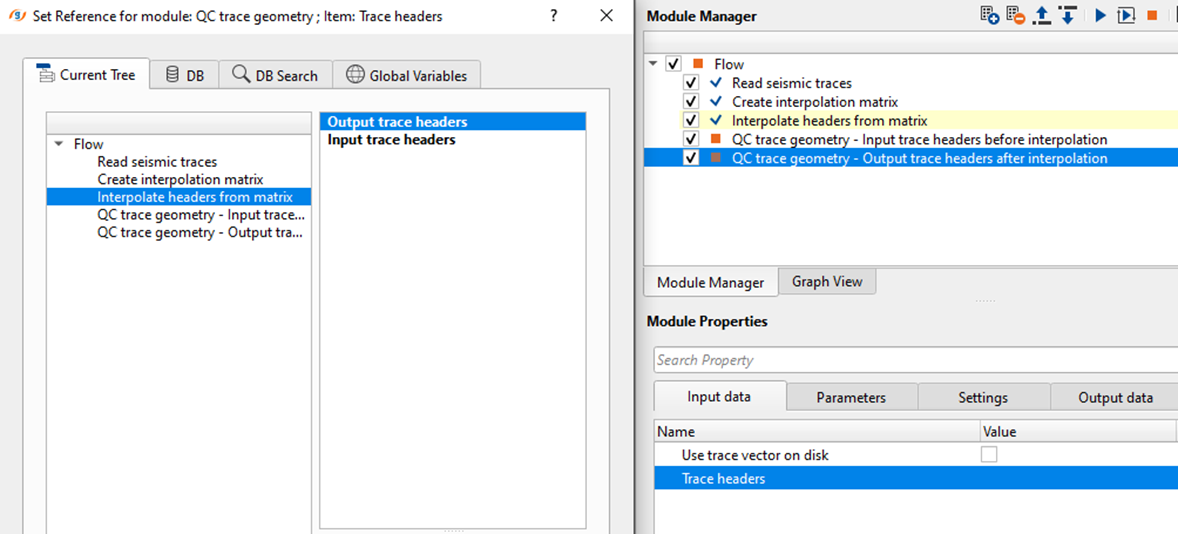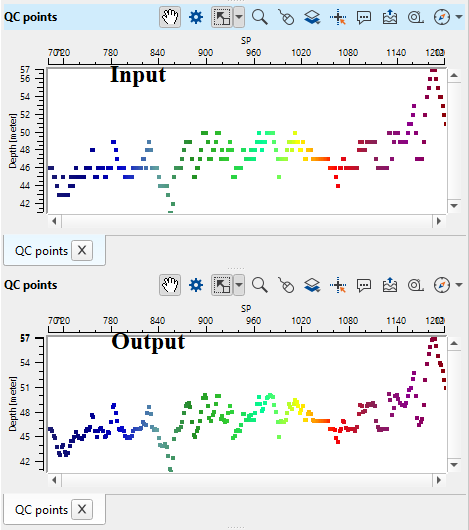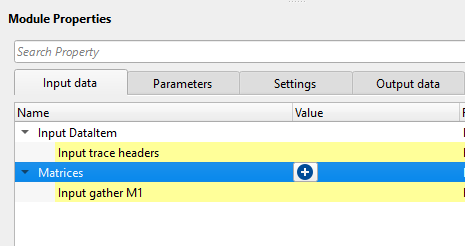Trace header interpolation using Matrix
![]()
![]()
Seismic trace headers holds many kinds of information like source & receiver elevations, depths, statics etc. Some of the values are sparse and they may not be available for all the traces due to various reasons. In order to have that information, we extract the information from a matrices and interpolate these values and update the trace headers.
Trace headers are having time, offset, elevation, uphole depth, uphole time etc. These data points are arranged in a matrix i.e. row and columnar format.
![]()
![]()
Input DataItem
Input trace headers - Connect/reference to the Output trace headers of any module.
Matrices
Input gather M1 - Connect/reference the module which has an interpolation matrix. The user can connect/reference as many interpolation matrix by clicking on the  icon.
icon.
![]()
![]()
Fill header collection - This parameter let the user to choose which headers needs to be interpolated. Click on  icon and it will pop-up a new window. Select the desired trace header from the drop down menu and perform any mathematical expressions if necessary in the Expression field.
icon and it will pop-up a new window. Select the desired trace header from the drop down menu and perform any mathematical expressions if necessary in the Expression field.
Unsafe -

![]()
![]()
Auto-connection - By default, TRUE(Checked). It will automatically connects to the next module. To avoid auto-connect, the user should uncheck this option.
Number of threads - One less than total no of nodes/threads to execute a job in multi-thread mode.
Skip - By default, FALSE(Unchecked). This option helps to bypass the module from the workflow.
![]()
![]()
Output DataItem
Output trace headers - This module outputs the updated output trace headers with the interpolation values.
There is no information data available for this module so the user can ignore it.
![]()
![]()
In this example workflow, we are interpolating the source elevations by using two modules.
•First create interpolation matrix where we create the matrix.
•Second, use this matrix to update the trace headers using "Interpolate headers from matrix"

We select the SOURCE_ELEV from the trace headers drop down menu.

Execute the module. There won't be any Vista items for QC purpose however we can check the output interpolated trace headers by using "QC trace geometry" module. In this we'll add two QC trace geometry modules to our existing workflow and connect/reference the input and output trace headers from "Interpolate headers from matrix" input and output trace headers respectively.


Now, display the QC points of both QC trace geometry module to check before and after interpolation of SOURCE_ELEV trace header values.

![]()
![]()
There are no action items available for this module so the user can ignore it.
![]()
![]()
YouTube video lesson, click here to open [VIDEO IN PROCESS...]
![]()
![]()
Yilmaz. O., 1987, Seismic data processing: Society of Exploration Geophysicist
 * * * If you have any questions, please send an e-mail to: support@geomage.com * * *
* * * If you have any questions, please send an e-mail to: support@geomage.com * * *
